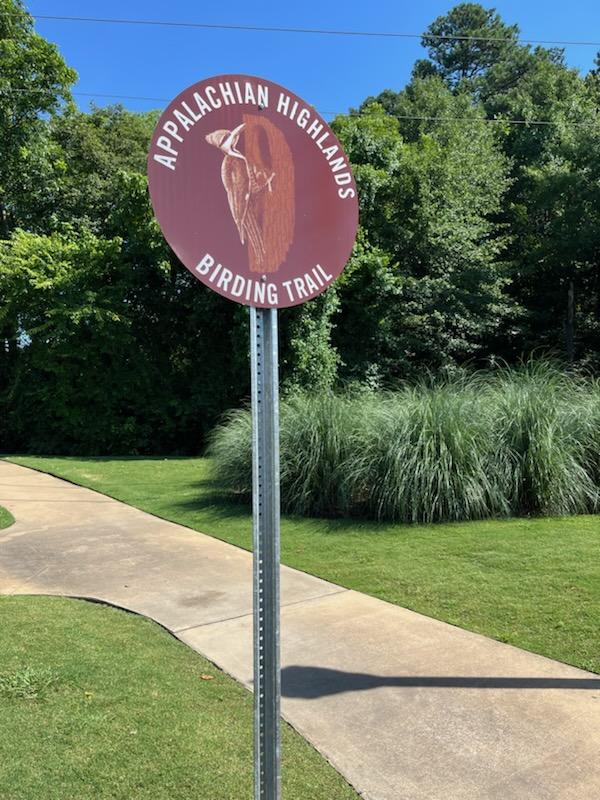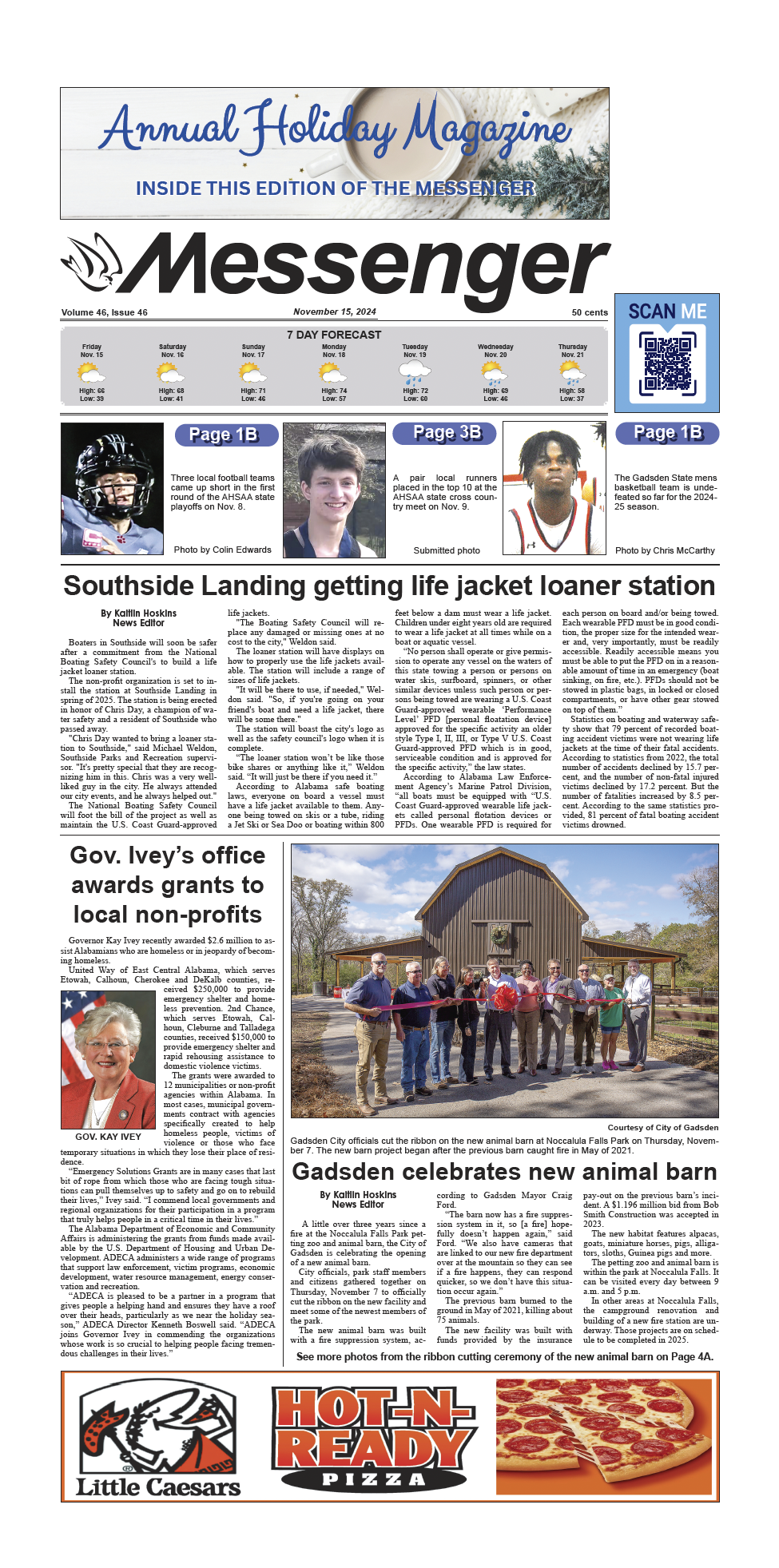Gadsden’s James D. Martin Wildlife Park was recently added to the Appalachian Highlands Birding Trail and new signs designating the park an official state bird trail have been added to the location.
Alabama’s Birding Trails offers the public a chain of eight geographic regions: North Alabama, West Alabama, Appalachian Highlands, Piedmont Plateau, Black Belt Nature and Heritage, Pineywoods, Wiregrass, and Alabama Coastal Birding Trail.
According to Greater Gadsden Area Tourism, Alabama is home to over 430 bird species and the eight Alabama Birding Trails unify existing and potential birding sites into a series of cohesive trails and loops that are collectively marketed as part of a state-wide system.
“The Alabama Tourism Department has provided much of the funding for this project,” stated a Greater Gadsden Area Tourism press release. “Many of the sites along the various trails are already being used by thousands of birders and other visitors annually.”
The system of eight trails highlights the best public locations available to watch birds year-round and is, according to Greater Gadsden Area Tourism, a project 15 years in the making.
“The James D. Martin Wildlife Park offers exceptional facilities for exploring an extensive backwater of Neely Henry Lake, on the Coosa River in the City of Gadsden,” the press release stated. “In addition to a walking trail along the shoreline, a network of boardwalks allows visitors to walk out into the 300-acre lake, and even to visit a series of wooded islands situated along the mouth of Black Creek, providing superb views of the birdlife of this rich and varied ecosystem. This part of the lake has well-wooded borders, as well as extensive wetlands and low-water mudflats.”
Birdwatchers should be on the lookout for Bald Eagles in the winter and Osprey from March to November. Great Blue Heron, Great Egrets, Black-Crowned Night Herons also make appearances throughout the spring and summer months.
“From the main entrance and parking area on Black Creek Parkway, a quarter-mile trail provides excellent shoreline birding and leads onto the network of boardwalks extending out over the lake,” the press releases stated. “The boardwalks provide the best birding opportunities for waterfowl such as American Coots, Pied-billed Grebes, Double-crested Cormorants, Gadwalls, Hooded Mergansers, Ring-necked Ducks, Lesser Scaup, Mallards and Canada Geese.”
Birdwatchers should also look for resident and migrant songbirds sheltering on the wooded islands, which also provide access to additional wetlands to the west. When water levels are low, shorebirds may be present on the mudflats and in the shallows. Watchers can spot, if they look carefully, Yellowlegs, small Sandpipers and Plovers, particularly in the spring, late summer and fall.
From the Black Creek Parkway entrance, a second walking trail skirts the north-eastern shore and overlooks the lake to the right, with dense thickets to the left. Where the trail forks, the right fork traverses a peninsula that reaches into the lake and offers an open wooded section with a covered picnic pavilion.
“This is a good place for finding canopy species, from a dependable variety of resident woodland species to winter mixed feeding flocks featuring both Ruby-crowned and Golden-crowned Kinglets, Yellow-bellied Sapsuckers, Brown Creepers, and Purple Finches and Pine Siskins,” the press release stated. “In spring and fall, this is also a good spot to look for migrant songbirds. The peninsula trail makes a loop, and eventually rejoins the main trail, just before it crosses a creek. Look north to scan the smaller lake for additional waterfowl in winter. After crossing the creek, the trail leads to a second, mall-side entrance to the park and additional parking.”
From the mall-side trail entrance, visitors may walk south along the lake on a paved, landscaped path complete with benches to scan the nearby portion of the lake for waterfowl and herons. Carolina Wrens and Song Sparrows pop in and out of the vegetation along the path here, and Northern Mockingbirds stand watch from light poles.
For more information on the James D. Martin Wildlife Park, or other natural beauties in Etowah County, visit the Greater Gadsden Area Tourism team at the Visitors Information Center at 623 Broad St., in Gadsden. The center is open Monday through Friday from 9 a.m. to 5 p.m. Please also visit www.GreaterGadsden.com or call 256-549-0351.




